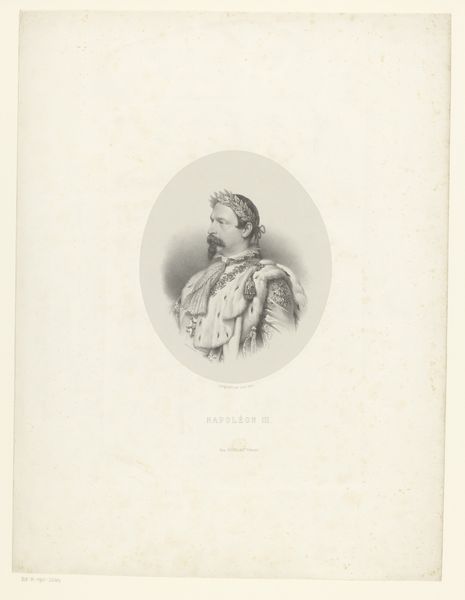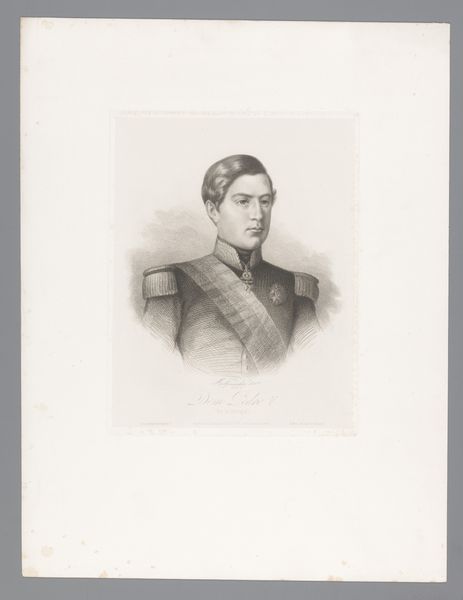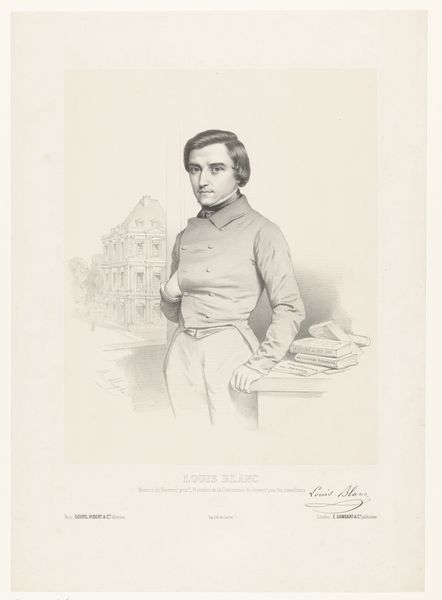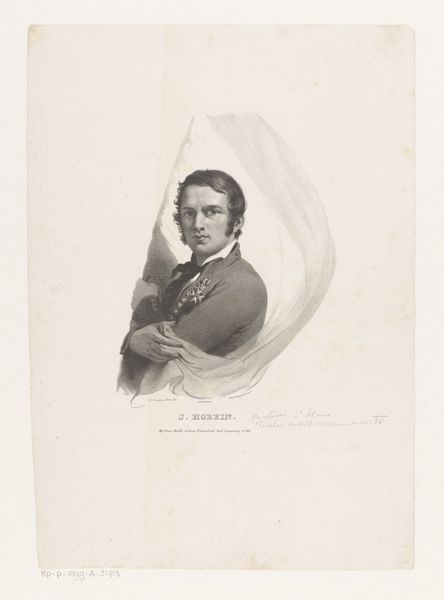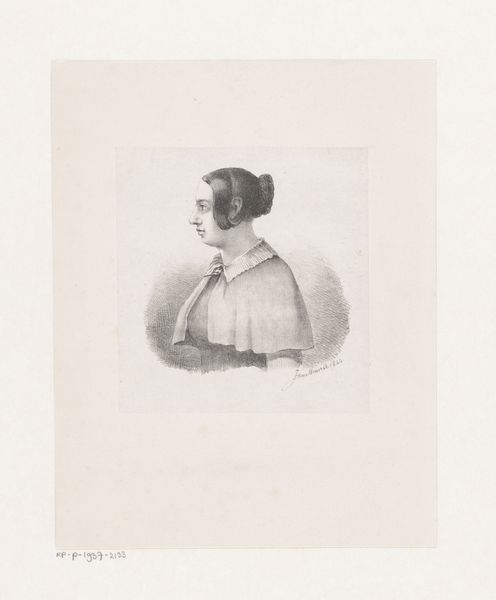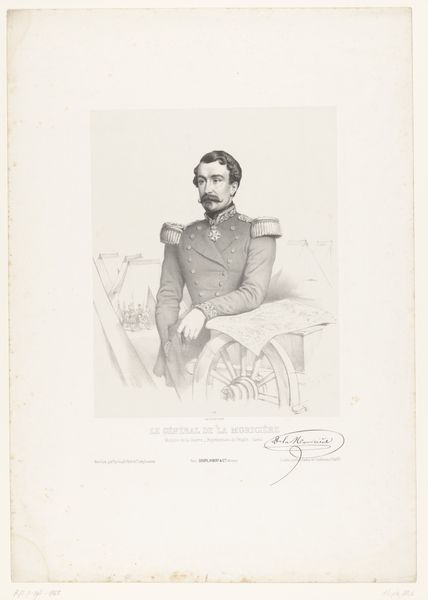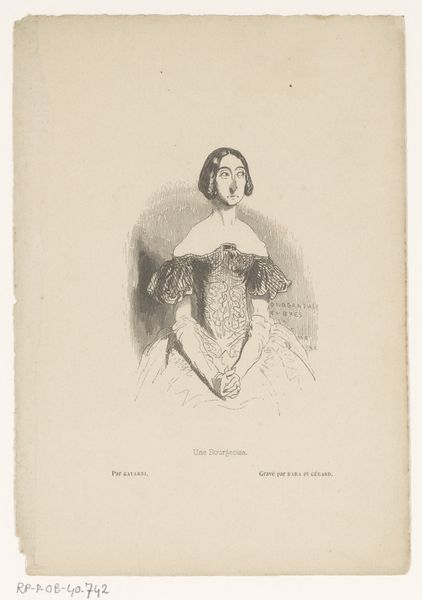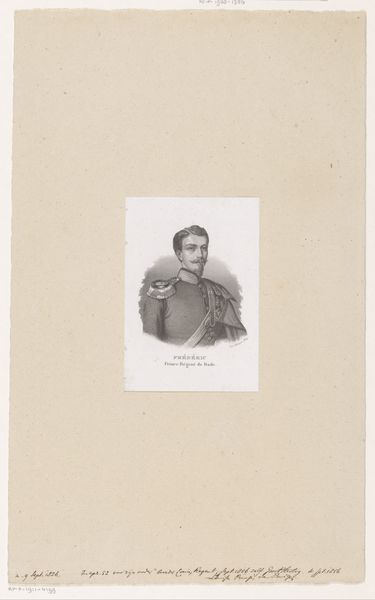
drawing, pencil
#
portrait
#
pencil drawn
#
drawing
#
light pencil work
#
16_19th-century
#
pencil sketch
#
pencil drawing
#
pencil
#
academic-art
#
realism
Dimensions: height 508 mm, width 377 mm
Copyright: Rijks Museum: Open Domain
Curator: This drawing is a portrait of Franz Joseph I of Austria, created around 1848 by Jean-Julien Jacott, rendered delicately in pencil. Editor: It strikes me immediately as being incredibly reserved. There’s a palpable tension between the subject’s youth and the weighty expectation implied by his attire and bearing. Curator: Yes, the details of his uniform are so precise, meticulously rendered, considering the medium of pencil drawing. Think of the artisanal knowledge involved in creating and replicating that level of detail. And notice the very slight use of shading - its effective for what the artist is conveying. Editor: Exactly. The craftsmanship reinforces the construction of power. It invites us to reflect on how systems of governance and hierarchies were reinforced, quite literally, through cloth and production and visual representation. Who had access to these portraits, how were they distributed, what meanings were created? Curator: It’s interesting to consider how the availability and reproducibility of such portraits shifted throughout the 19th century with developing technologies like photography. This one is a lithograph after the drawing which makes that distribution far more achievable. Editor: I agree. It reminds me of how portraits functioned in shaping public perceptions. What narrative was being carefully woven around Franz Joseph I during this period, especially given the revolutionary climate of 1848? It all feels incredibly calculated, as if projecting an image of stability through meticulous craftsmanship could quell dissent. Curator: And even within the drawing, that globe on the right implies a literal control and perspective over global affairs and empires through industrial progress. Editor: These seemingly simple aesthetic decisions can uncover rich commentary on both art history and broader historical and socio-political structures. Thank you for highlighting these nuanced relationships and details. Curator: Indeed! These small objects are quite useful for accessing broader issues of social production.
Comments
No comments
Be the first to comment and join the conversation on the ultimate creative platform.



